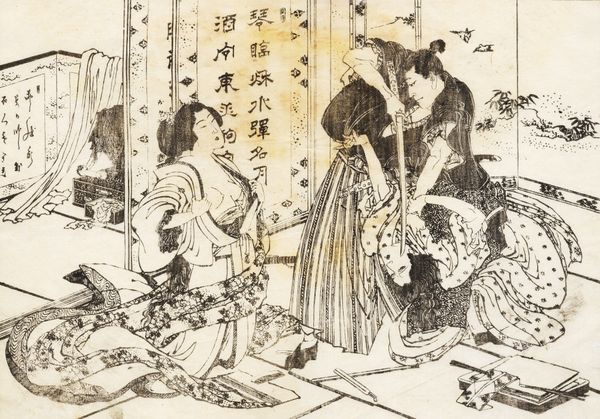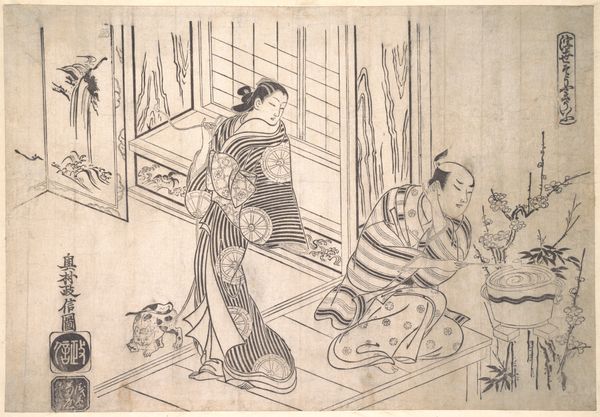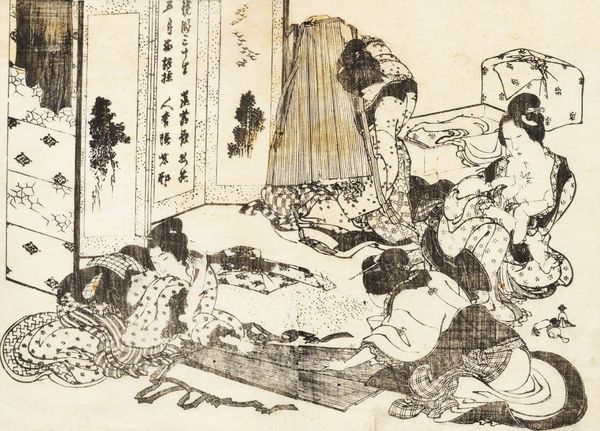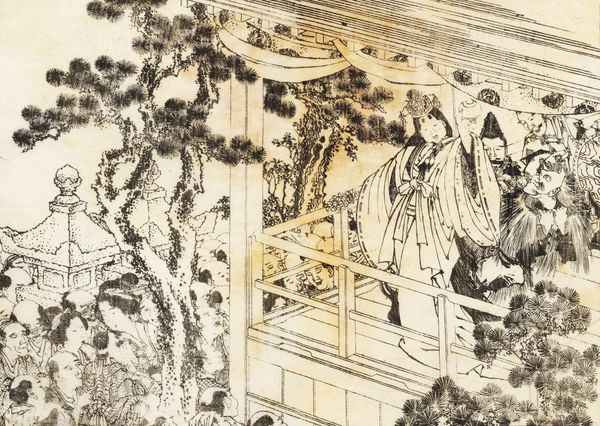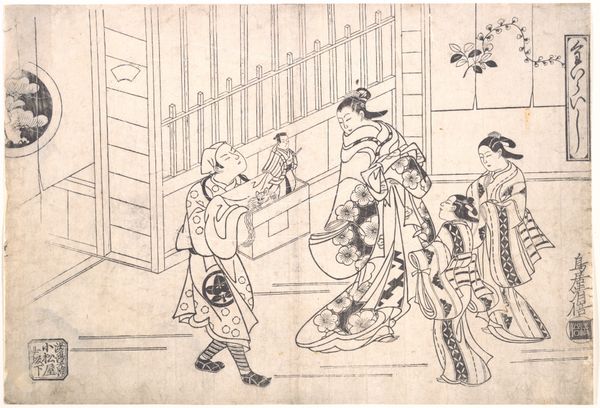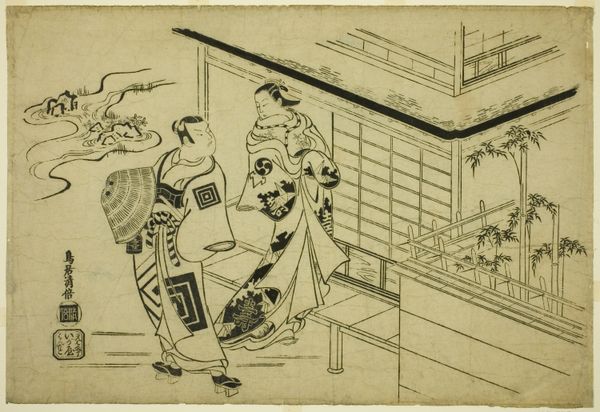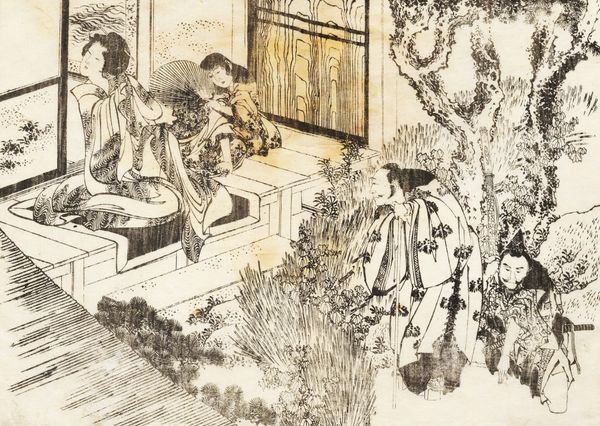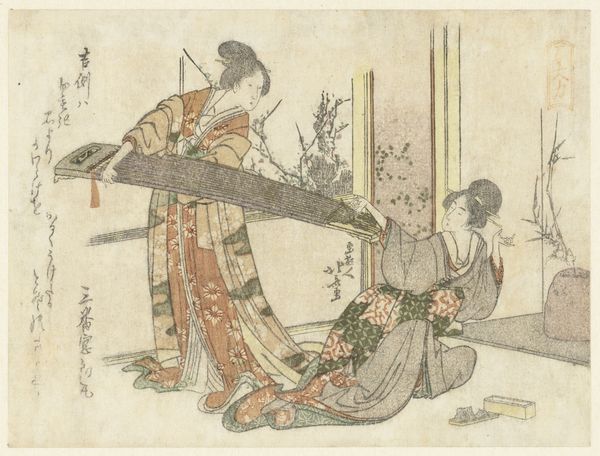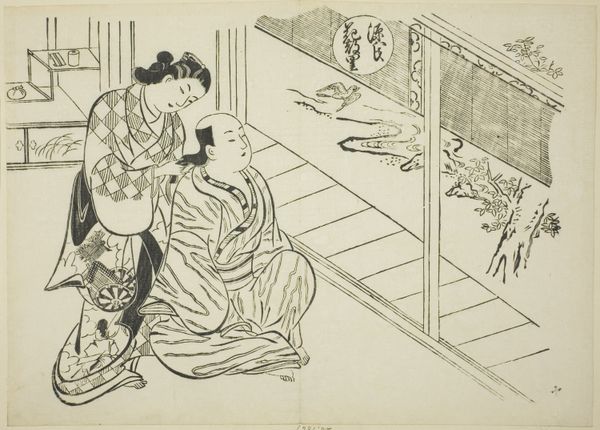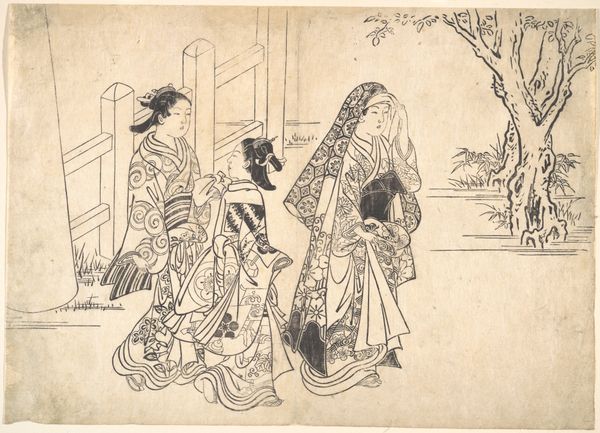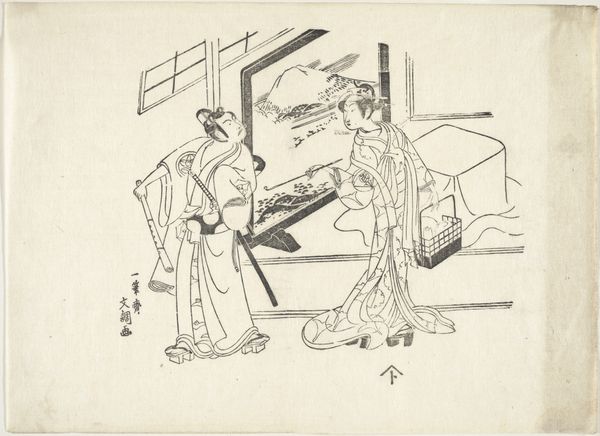
drawing, print, ink, woodcut
#
portrait
#
drawing
#
ink drawing
#
pen drawing
# print
#
pen sketch
#
asian-art
#
ukiyo-e
#
ink
#
group-portraits
#
woodcut
Copyright: Public domain
Curator: Looking at this print, with a title suggesting "A woman in shinto shrine has a stick with a lot of paper leaves," by the artist Katsushika Hokusai, it seems a scene unfolds with nuanced cultural weight. It is executed using ink and woodcut. What strikes you first? Editor: The quietude. Despite the intricate linework and detailed patterns in the garments, the overall impression is one of hushed reverence, a meditative calm. The delicate, almost skeletal, tree beyond the lattice seems to amplify that stillness. Curator: Yes, the setting seems deeply connected to ritual space. What is striking to me, beyond just "Asian art," is understanding this print through the lens of Ukiyo-e tradition. These were popular and commercial arts intended for a wide audience, yet, through Hokusai’s choices we find complex social commentary embedded. Who is this woman, and what are these paper leaves for? Is this an exploration of female power within the confines of religious practice? Editor: Certainly. The "paper leaves" suggest prayer, or offerings perhaps tied to specific Shinto practices like purification rituals. This begs the question, in representing this woman, what narrative is being subtly advanced? Consider also that the second male character and how is actions reflect on power structures. The careful detail afforded to her robes suggests status but perhaps also points towards expectation or confinement based on those traditional structures. Curator: Absolutely. The male figure within the shrine further complicates this interpretation. It encourages discussions surrounding the accessibility of these spaces based on gender, the representation of Shinto practices, and the gaze with which these individuals were viewed by the wider Edo-period society. Who could afford such art, and how did these images reaffirm or perhaps subtly challenge socio-religious constructs? Editor: It underlines the intersection of spirituality, gender roles, and social hierarchies. Hokusai doesn’t just present a scene, he subtly layers meaning through careful compositional choices. Curator: Understanding this artist's role in the history of art offers profound reflections regarding representation and agency. Thank you for taking the time to analyze with me. Editor: Thank you. It helps us to explore beyond face value.
Comments
No comments
Be the first to comment and join the conversation on the ultimate creative platform.
